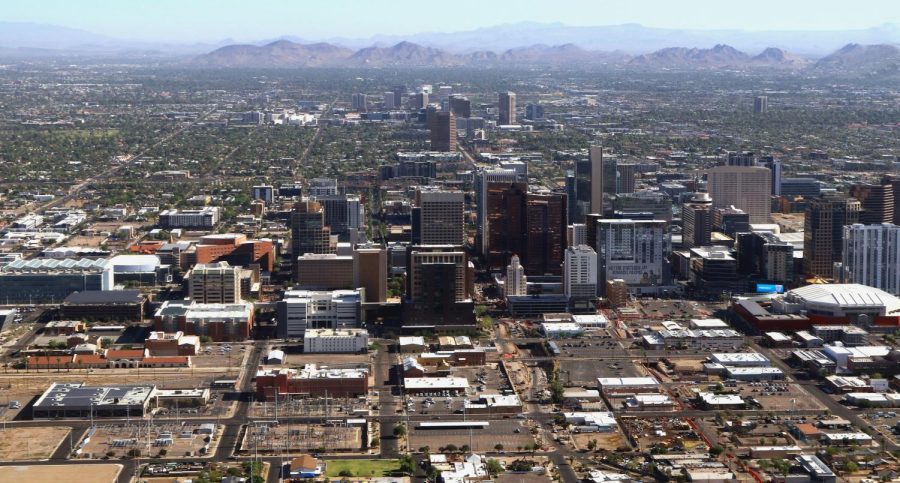Arizonans love the “cool” desert June so far
June has most days below 100 degrees since 2009—tree and vegetation areas reduce heat
prayitno3063@gmail.com (FLICKR)
Downtown Phoenix
June 14, 2023
The good weather run continues into the summer as this year’s June has proven to be significantly cooler than average.
Following a record breaking winter, the Valley has continued to have amazing weather, and residents have noticed.
Northeast Valley News spoke to some residents out and about enjoying the cool 89 degree day.
“It reminds me of the 60s and 70s, it was much cooler then. Things were smaller and the weather was nicer.” said Mesa resident Lora Reyes
Reyes, a lifelong Valley resident, contributes some of the unbearable heat we see in the summer to rapid urbanization. This correlation between urbanization and hotter temperatures is referred to by experts as the “urban heat island”.
“Ever since the late 80s, early 90s, there’s been too much building. They make too many parking lots—whole blocks,” Reyes said.
The Phoenix Valley, being heavily populated and sprawled out, is one of the best and most notorious examples of this form of climate change.
Those who suffer the most from the sprawl are low-income households.
Reportedly, lower-income neighborhoods in the Valley feel the effects of the urban heat island more intensely.
Urban development is counterproductive if the goal is to keep streets cool that is. Little to no vegetation, large open roads, and block after block of open parking lots riddle much of Phoenix and invite heat.
Simply planting more trees and maybe a little grass is an incredibly effective way to combat the heat island effect.
For many people in South Phoenix for example, the sight of a grassy field or some decent shade is a rarity.
Valley residents may be familiar with the areas just south of downtown Phoenix but compare this to the more affluent Arcadia neighborhoods against the color palette of South Phoenix and it will be mostly gray and in contrast to the Arcadia areas which are greener.
In higher-income areas, vegetation is much more common.
A interesting tool to observe this can be found in the “Tree Equity Score Map” a website which maps out tree coverage in major US cities. The Tree Equity group is a collaborative effort that many big name groups (both private companies and government agencies) have sponsored.
“In cities across America, trees have historically been planted along race and class lines. Ensuring equitable tree cover across every neighborhood can help address social inequities so that all people can thrive.” A statement from the organization reads.
For now, all of us can enjoy the cooler temps while they stick around. But why has this summer been cooler than usual?
Some experts predicted that with the upcoming El Niño season we would see an increase in rain and lower than average temperatures. Some experts also say that the world climate is naturally cyclical, and that the occasional unseasonably cooler period is a normal thing.
There’s no consensus but one thing is for certain, it’s gonna get hotter. This is inevitable but for those who live in the desert—at least for now—we can still enjoy the 70 degree nights and mid 90s days.
The National Weather Service predicts a cooler than average remainder of June for the American Southwest.


